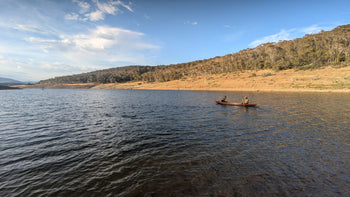

Many Aussies flock to the northern parts of Australia in the wintertime to escape the chills. Destinations such as Cape York in Far North Queensland are a haven at this time. Keep reading for some information and tips.
The Cape York Peninsula’s climate is characterised by two distinct seasons — the wet season, also known as the ‘Wet’, and the dry season, also known as the ‘Dry’— with the wet season happening from around mid-November to mid-April and the Dry from mid-April to mid-November. Luckily, when it’s winter in most of Aus, it’s the dry season in the north, making it the perfect time to visit famous northern regions such as Cape York.
No matter what reason you’re travelling to the Cape for — be it to tick off ‘The Tip’ (the northernmost point of Australia) on your bucket list, or to visit the Great Barrier Reef, Port Douglas, Cairns, the Old Telegraph Track, the Daintree Rainforest and more — here’s some information to help you get the most out of your trip.


Climate
During the Wet the Cape York Peninsula is soaked by the northwest monsoon and periodic rain depressions. The bush is beautiful and lush, but flooding closes most roads during this time of the year and many local businesses shut their doors for the season.
In stark contrast the Dry is six months of drought, with some areas receiving no useful rain at all — the main exception is the east coast, parts of which often experience showery weather during the cooler months (June to August).
During the dry season the vast savanna landscapes change from green to brown and finally to black as fires scorch the grassy understorey. As the Dry intensifies the wetlands evaporate, leaving water-dependent wildlife to congregate around the remaining swamps and lagoons. During October/November inland residents swelter under high humidity and maximum temperatures that often reach 40°C.
For much of the dry season the Cape’s east coast experiences the full force of the southeast trade winds. In April the wind strengths are variable, but May sees the wind blow for 80 per cent of the month with average velocities of 12–15 knots. In August the winds become even stronger, with average speeds of 29 knots. The southeasterlies ease off during November, when northeasterlies begin to prevail.
Travellers intending to visit Cape York during the winter months should come prepared for warm days and cool nights. Dews are common even late in the Dry, but frost is unknown.
Beat the crowd
The busiest times coincide with the southern winter (June, July and August) and the September school holidays. If you want to avoid that peak period consider going in May or September (not during school holidays), the so-called shoulder months.
In May the bush is still green, there are sunny days and there’s still quite a bit of water lying about, whereas in September the days are warming up and the waterholes are retreating, but it’s still comfortable. By October/November almost everyone has cleared out because it’s too hot. We recommend following suit.
Please note that the Cape is not somewhere you travel to on a whim in the dry season. It is an extremely popular time and campsites/accommodation are booked out far in advance. Ensure you have finalised your bookings prior to setting off.
Also make sure you check for national parks closures on the Queensland Parks website as many don’t reopen until June. It’s much more useful knowing this information ahead of time.


Further reading
If you’re heading to the Cape York Peninsula this winter, we recommend the Hema Maps Cape York Atlas & Guide. If you love four-wheel driving and camping and want comprehensive coverage of the region, including detailed cartography, to help plan your own Cape York adventure, this guidebook has it all in one place. Plus, find out about the area’s Top 15 4WD Trips — each trip features a detailed map plus all the info you need for planning, including trip grading, longest distance without fuel, permits and relevant contact details.



